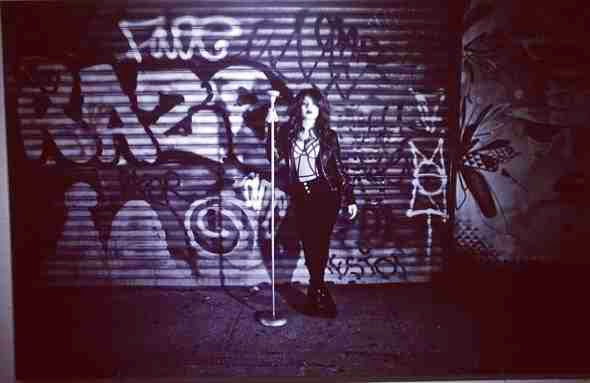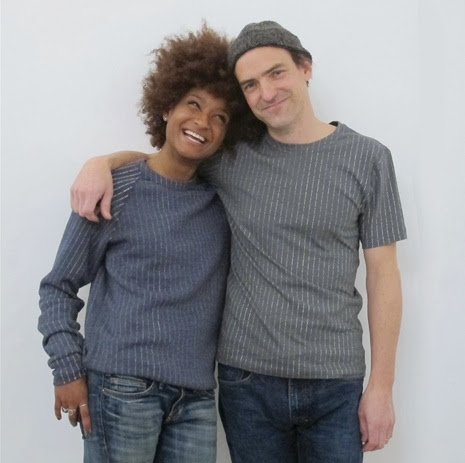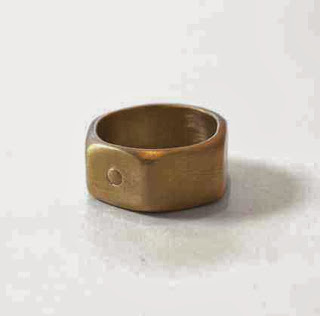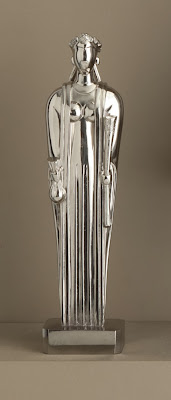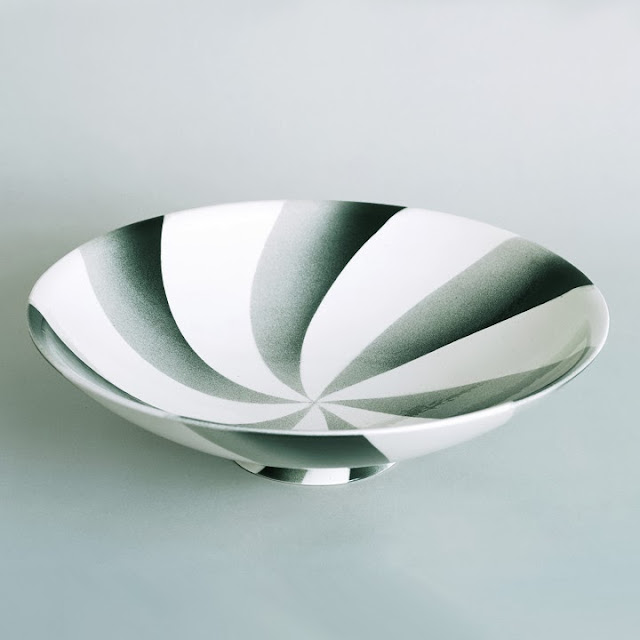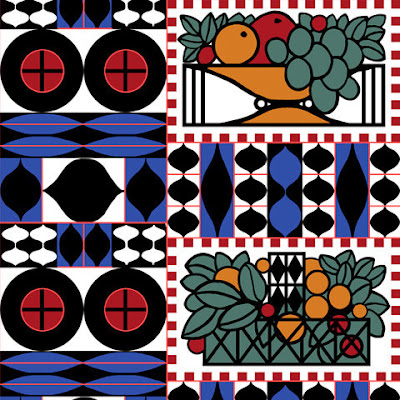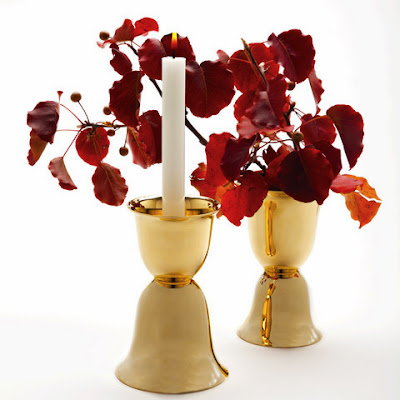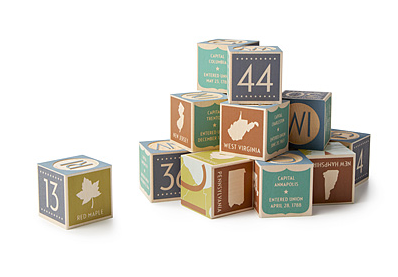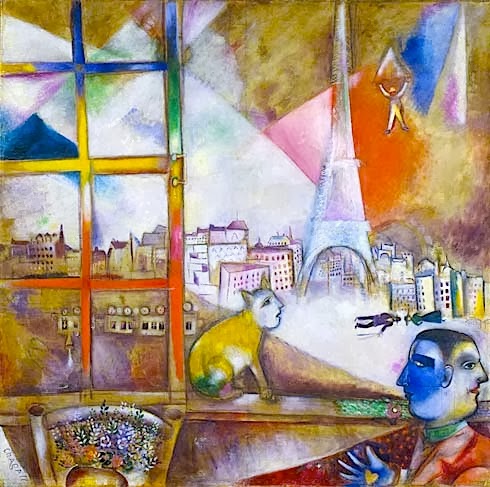 |
| "Bedroom at Arles" 1889, Oil on Canvas, by Vincent van Gogh Van Gogh did several drawings and versions of this subject. The above version is in the collection of The Art Institute of Chicago (IL) USA |
 |
| Watercolor of the Yellow House in Arles. In May 1888, Van Gogh rented four rooms on the right-hand side of a house on the Place Lamartine in Arles. His living quarters were the ones with the green shutters. His bedroom lay beyond. Vincent had finally found a place where he could not only paint but also welcome his friends. His goal was to establish a “Studio of the South,” where he and like-minded artists could work together. |
"Slaapkamergenheimen"
Dutch for
Bedroom Secrets
from the
Van Gogh Museum
in Amsterdam
in this issue we share the text, photos and artworks provided by the Van Gogh Museum in Amsterdam. Fine art restorer Ella Hendriks discusses her work regarding: restoring and reconstructing "The Bedroom" at Arles by Van Gogh
| Hendriks sees herself as a privileged individual: ‘It is so extraordinary to have physical contact with Van Gogh’s work. Research can teach you a lot, but in treating a painting you come even closer to it; you have to understand it through and through. ‘I’ve literally examined Van Gogh’s works under the microscope. I want to become familiar with every square centimeter. If you can do that, then in some small way, you’ve truly made them your own.’ |
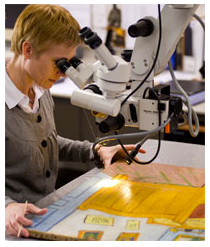.png) |
| Ella Hendriks, senior conservator at the Van Gogh Museum in Amsterdam investigates the painting under a microscope. |
It has been proven that many of the original colors in Van Gogh’s oeuvre have altered with time. Hendriks has made a detailed study of this phenomenon in recent years: ‘By collaborating closely with scientists I have learnt a great deal about the use of color and discoloration; by now I have acquired almost as much expertise in this area as Van Gogh himself, who knew an enormous amount about theories of color and the science of his day!’ she laughs.
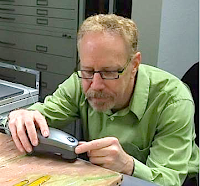 |
| Professor Roy Berns |
Professor Roy Berns, director of Munsell Color Science Laboratory (USA), with whom Hendriks collaborated closely in the reconstruction of The bedroom, provided the necessary scientific basis by making color measurements and mathematical calculations to enable the digital restoration of the colors. The increased awareness of the phenomenon of discoloration also influenced the treatment of the painting itself. ‘There is a big difference between this and earlier restorations of The bedroom’, remarks Hendriks. ‘In 1931 and 1958 the work was treated by the same conservator. Initially he thought that he had painstakingly restored the painting to its “original state”, as he wrote. Now we know that that is completely impossible, since a painting changes continuously from the moment it leaves the easel.’ In 1958 this conservator indeed had to confront the fact that the colors in the painting had changed since 1931, making it necessary for him to retouch his own retouches.
Best possible palette
‘We know a lot more now than we did in 1958’, she carries on. ‘We know the risks and are better able to reduce them, for instance by limiting exposure to light as much as possible to retard the discoloration process. You can't stop it completely, however, and that's something you have to bear in mind.’ Thanks to Berns’s work, Hendriks now possessed the best possible palette with which to retouch the painting. On the basis of his color measurements on the painting, he was able to advise a mixture of pigments for every damaged area that needed retouching, a mixture that would correspond precisely, at all times (in other words, under different light sources) to the original colour surrounding it.
‘We know a lot more now than we did in 1958’, she carries on. ‘We know the risks and are better able to reduce them, for instance by limiting exposure to light as much as possible to retard the discoloration process. You can't stop it completely, however, and that's something you have to bear in mind.’ Thanks to Berns’s work, Hendriks now possessed the best possible palette with which to retouch the painting. On the basis of his color measurements on the painting, he was able to advise a mixture of pigments for every damaged area that needed retouching, a mixture that would correspond precisely, at all times (in other words, under different light sources) to the original colour surrounding it.
Digital color reconstructions
Traces of the original colors can sometimes be found, under the frame for instance. This makes it possible to build up an impression of what the painting once looked like, but to actually see it, you need a digital reconstruction. These traces make it possible to create that reconstruction. With the Munsell Color Science Laboratory and a team of external and internal museum specialists, Hendriks succeeded, with The bedroom, in making a complete digital reconstruction of this kind for the very first time: ‘Although it will never be an exact replica of the painting, we now know far better what the work originally looked like.’
Traces of the original colors can sometimes be found, under the frame for instance. This makes it possible to build up an impression of what the painting once looked like, but to actually see it, you need a digital reconstruction. These traces make it possible to create that reconstruction. With the Munsell Color Science Laboratory and a team of external and internal museum specialists, Hendriks succeeded, with The bedroom, in making a complete digital reconstruction of this kind for the very first time: ‘Although it will never be an exact replica of the painting, we now know far better what the work originally looked like.’
Reaccessing Van Gogh
 |
| Snow-covered field with a harrow by Van Gogh |
A comment by Axel Rüger, Director of the Van Gogh Museum in Amsterdam:
 |
| Axel Rüger Director of the Van Gogh Museum |
Much to my delight The bedroom is back ‘home’ in Amsterdam after having been on loan to Japanese museums for a period of several months. The painting was thoroughly restored before it travelled to Japan. We reported on this in the museum under the title Bedroom secrets. This culminated the presentation of the restored painting in the gallery. The public’s reactions were overwhelming.
We are presenting the opportunity of following the technical and scholarly decisions underlying the restoration, in Bedroom secrets, once again.
Reconstructions in 2D and 3D
A special attraction has been added this year: a life-size reconstruction of the bedroom! The bedroom in the Yellow House in Arles has been faithfully recreated on the basis of descriptions in Van Gogh’s letters and naturally the painting itself. While the objects and the furniture in it are not authentic, they reproduce the room’s atmosphere to the extent possible.
A note from artist and writer, Monica Rotgans
"On the play of complementary colors: cool and warm, primary and secondary."
"On the play of complementary colors: cool and warm, primary and secondary."
The clash of the primary colors
In its current restored state, Van Gogh’s The bedroom is a clean, crisp, vivid painting. Yet its cool atmosphere and lively colors are only part of the story. The bright blue walls suggest a spaciousness that turns out, on closer scrutiny, to be at odds with the relative proportions of the floor and the bed and with the painter’s description of the room in his letters. Currently, the three primary colors are in conflict, with blue predominating. From a painter’s point of view, the work is fraught with tension.
 |
| Digital reconstruction of original colors in the painting. An impression of the painting as it probably looked when it had just been completed. Technical analysis of the painting revealed that it had severely discolored in the course of time. |
Color and tone
‘I had wished to express utter repose with all these very different tones,’ Van Gogh wrote to Gauguin. After staying indoors for two full days to rest his strained eyes, the first thing he had painted was the interior of his small bedroom.
Calm, or ‘repose’, is suggested in a painting by avoiding contrasts. This means using colors that are equally light or dark – in other words, equivalent tones. The quickest way to determine whether you’ve actually created a calm atmosphere is by squinting at the painting through your eyelashes, so that the details fade and only the main forms and contours remain. If we look at The bedroom this way, we immediately see what is wrong with it: namely, the walls and the blanket. The walls are too light in tone, and the blanket too dark. The digital impression restores the lavender color of the walls (by removing the white) and brightens the red of the blanket, bringing the tonal values into balance and restoring the sense of repose.
Vincent writes that the only white he wanted in the painting was the reflection in the mirror. As he puts it, the fourth pair of complementary colors, white and black, is represented by the mirror and its frame. At present, this effect is cancelled out by the abundance of white in the walls.
Cool and warm colors
The reconstruction shows the logic of the original color scheme, based on a single, dominant primary color and the interplay of mutually reinforcing, complementary secondary colors, both warm and cool.
The cool colors:
Purple (violet) – walls
Terracotta – floor
Lime green – sheets and pillow
Emerald green – window frame
Terracotta – floor
Lime green – sheets and pillow
Emerald green – window frame
The warm colors:
Scarlet – blanket
Chrome yellow – bed
Ultramarine – door frames
Chrome yellow – bed
Ultramarine – door frames
Van Gogh also uses a range of blues, such as cool Prussian blue, tending towards green, and warm cobalt blue, inclining towards red. Combined with white and the warm but unstable pigment known as geranium lake, which was a favourite of Van Gogh’s, cobalt blue gives a beautiful violet-purple hue.
Leading part for the blanket and the bed
The central color in the painting is red, which Van Gogh applied quite thickly. Around this primary color revolve several others, most of them complementary and secondary: cool purple (composed of red, white and blue), warm yellow and various warm and cool hues of green (composed of blue and yellow).
The eye is first drawn to the red blanket – which is currently a cool, discoloured red, comparable to Cadmium Red Dark – embedded in the warm yellow of the bed frame. The floor and the furniture are linked by their yellow and red elements and form the warm part of the scene. The distinct benefit is that, as a group, these elements clearly project themselves into the foreground and form the basis of the composition.
The walls and doors are a cooler variation on the pink of the floor and seem to embrace the foreground. At this stage the function of the green window, ensconced in the violet, becomes apparent. Green is complementary to the primary color red. Because green is composed of the other two primary colors, red and green reinforce each other and are often used in combination.
Against the faded blue-white of the walls in the painting in its present state, the green window frame is much too heavy and isolated. It seems to float free of the wall, drawn to the red blanket and the green lines at the foot of the bed. The violet of the walls in the reconstruction reveals the warm light entering the room from outdoors, softened by the shutters. This effect is currently overpowered by the bright bluish-white in the walls, which resembles a primary color. The reconstruction restores Van Gogh’s small, warm room in an old house with thick walls in the sun-drenched south of France.
Thanks to the latest technology and, even more importantly, to collaboration between the various disciplines that study art and color, we can now see and understand the artist’s work in the way he most probably intended. For me as a painter, knowledge of the original materials is an absolute necessity before I can form an opinion about a painting or offer an art-historical interpretation. Vincent would be greatly relieved to know that his intentions are now visible once again.
Ella Hendriks notes:
Compromises
Despite the perfectionist streak common to most conservators, in fact many of the steps we have to take are based on compromise. This was certainly the case for the decision to re-varnish The bedroom after cleaning, despite the fact that the painting seemed not to have been varnished originally.
A new varnish
A main reason for this choice was the sensitivity to solvents of certain colour areas, which had made it impossible to remove the old varnish everywhere from the painting. For safety reasons, the varnish was left intact in the vermilion bedspread, as well as in smaller areas, such as the Prussian blue mirror frame.
Application of a new matt varnish would help to knock back the disturbing gloss of these areas, whilst slightly improving saturation of others, evening out the surface.
New retouches
In addition, removal of extensive old overpaint had revealed many spots of damage and open cracks scattered across the painting. A new brushed varnish layer was felt desirable to isolate original paint from the fillings and retouches I would apply to reintegrate these paint losses.
A ‘non-varnished’ look
As a final measure, a very thin layer of matt varnish with added wax would be sprayed onto the painting to avoid a varnished look. Unlike the dammar varnish applied by the previous restorer, stable and non-yellowing materials would be used that are anticipated to remain easily soluble in mild solvents if required (Regalrez 1094, a low-molecular weight hydrocarbon resin varnish with Cosmolloid 80H wax added) .
With this choice it is felt that both the safety and satisfactory appearance of the painting have been guaranteed.
Varnish removed and paint retouched - time laps below:
A retouching palette
Van Gogh and his contemporaries were keen to apply modern theories of colour science to the art of painting. For me, an innovatory aspect of The bedroom treatment was the opportunity to work together with colour scientist Roy Berns in order to select an ‘ideal’ retouching palette that I could use to touch in old paint losses (so-called ‘inpainting’). Based on the known spectral properties of the Gamblin range of retouching colors, it was possible to determine a recipe to match different spots of colour that had previously been measured on the painting. Importantly, this match is predicted to persist for different light sources, so that my retouches would not suddenly ‘change’ if the painting is hung in different lighting. I was curious as to how this process would compare to the usual trial-and-error approach of mixing and matching colors by eye.
Trial and error
Whilst waiting for the color recipes and some missing pots of color to arrive, I experimented with the Gamblin colors we had in stock. Intuitively, it turns out that I did reach the same choice of blue pigments that, based on calculation, would be recommended for use in the blue walls and outlines of the door panels (cobalt blue and ultramarine respectively) mixed with titanium white.
The recommended set of colours
However, I had problems with matching the elusive chrome yellow colour of the foot end of the bed with its aged greenish-brown translucent skin. Great was my delight when the recommended set of Gamblin colours arrived from America and indeed turned out to provide a very good basis for retouches in the bed frame (roughly equal quantities of Naples yellow deep and Permanent green light with a little Dioxazine purple and Titanium white added).
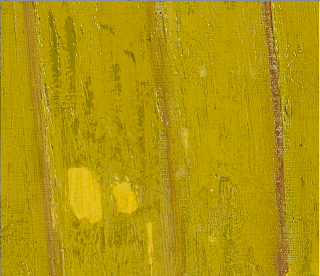 |
Detail of the foot end of the bed after cleaning, before retouching. |
 |
The same area after retouching. Some old residues of brown overpaint that could not be safely removed have been touched out with new retouches. |
Science and intuition
I am quite certain I would not have reached the same choice alone, since especially the rather lurid Permanent green light seen in the pot was not an obvious candidate to me. Working with this basic set of colours, the old-fashioned skills of the conservator remained essential to make the subtle adjustments of colour, texture, opacity and layering required at each spot on the painting. As for Van Gogh, it seems that colour science and intuition can work well hand-in-hand.
During 2002 and 2004, I made spectral reflectance measurements of several areas of Van Goghs painting Daubigny’s Garden. Unusually, it is painted on a tightly woven, red-striped linen cloth known as torchon. Van Gogh prepared the canvas himself with a pink ground layer containing the red pigment geranium lake and lead white. Today that layer has faded to gray. I measured the gray ground layer and an area along the edge that, due to damage, revealed the fantastic pink colour shown below.
Edge of the canvas of Daubigny's garden.
 |
| Daubigny’s Garden is painted on a tightly woven, red-striped linen cloth known as torchon. |
This area was quite small and my spectrophotometer was averaging the pink and some of the surrounding gray. As a consequence, when simulating the ground color, I used spectral information from a paint-out of eosine dye, the chromatic ingredient of geranium lake, and titanium white gouache.
Because geranium lake was also used in The bedroom, I revisited my measurements of Daubigny’s Garden. Using light absorption and scattering theory and nonlinear optimization, I was successful in estimating the color properties of Van Gogh’s geranium lake. A concentration series with lead white is shown below. Clearly, this colorant would have been very appealing.
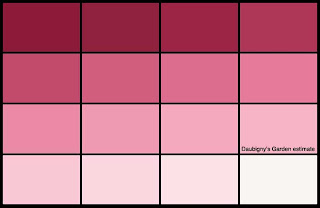 |
In the Daubigny’s Garden painting Van Gogh prepared the canvas himself with a pink ground layer containing the red pigment "geranium lake" and "lead white". Above are the possible color concentrations of the ground layer. |
During 2008, I measured over 50 locations on The bedroom: mainly to evaluate imaging accuracy (to determine the current colors of the painting), but also to help Ella Hendriks choose appropriate pigment combinations for retouching.
Here’s a close up of one area I measured and you can see that there is a large mismatch in colour between retouchings from 1931 (pinkish) and the surrounding original paint (purplish). It appears that the floor has continued to fade since 1931.
A question was posed, ‘Could the geranium lake from Daubigny’s Garden be added (computationally) to the color of the floor of The bedroom and match the 1931 retouching?’ The answer was, ‘yes’, and here is color series showing the result of adding back to geranium lake, both to match the 1931 retouch and earlier in time, though going back earlier is speculative because we don’t know the original concentrations.
In letters to his brother Theo, Van Gogh described the walls and doors as having a ‘violet’ color; today they are blue. I did a similar computation for a measurement I took of the door, and indeed, adding geranium lake, reveals a violet.
 |
| Possible color concentrations of the doors and walls in The bedroom. |
Although I have already started with some tests, I hope that in the future I can attempt a digital rejuvenation of the entire painting. For now, here is a preview, of the possible colors of the floor in 1931.
Fleur Roos Rosa de Carvalho
is curator of prints and drawings at the Van Gogh Museum
When you write about the use of color as an art historian, it is very important to realise that you can base your remarks solely on the object itself. For most reproductions of artworks are far from reliable. That is because every camera, every film, every scanner, and every computer screen produces its own color variations. Just try browsing the Internet for The bedroom and you will be astonished at the different variants that appear on your screen!
is curator of prints and drawings at the Van Gogh Museum
 |
| Fleur Roos Rosa de Carvalho Curator of Prints and Drawings Van Gogh Museum |
When you write about the use of color as an art historian, it is very important to realise that you can base your remarks solely on the object itself. For most reproductions of artworks are far from reliable. That is because every camera, every film, every scanner, and every computer screen produces its own color variations. Just try browsing the Internet for The bedroom and you will be astonished at the different variants that appear on your screen!
To illustrate how great these differences may be, I am showing four of the search results I obtained myself. Not one of these four reproductions resembles the actual painting.
It was long believed that the dissemination of art reproductions – at first in the form of photographs and today also through the Internet – would lower the status of the original work. After all, these days anyone can hang a reproduction of an important work of art like The bedroom in their own home. But the unreliability of these images actually has the reverse effect: the original becomes all the more important.
We have already mentioned that the intensity of the colours of The bedroom have changed, moving away from the intentions of the artist.
The Van Gogh Museum is conscious of the difficulties that surround the reproduction of works of art, and therefore has its own ‘colour management’. A photographer specially hired for the purpose and an image specialist are busy all day producing accurate images of the items in our collection. The images of The bedroom that are shown on this site can therefore be described as reliable. Well, except … have you checked the color settings on your monitor?
In theory, one could choose to overpaint the floor to return it to how it looked around 1931, using the peachy color of the preserved strip of original paint along the bottom edge and of Traas’ first retouches as a guide. However, nowadays, such integral overpainting is not an option, since we prefer to show as much as possible of Van Gogh’s own paint. Furthermore, any such attempt would have a "too speculative" character. Instead we will try to exploit modern technologies to digitally rejuvenate the color scheme of the painting in a computer image. This might give us an idea of how it could have looked when made. Besides adjusting the colors of the floor, this may include a reconstruction of the ‘pale violet’ walls and ‘lilac’ doors described by Van Gogh, which, again as a result of faded Geranium lake, have now turned to light blue.
The disturbing mismatch of retouches in the floor provides a dilemma for the current restoration. Should I try to remove part or all of Traas’ retouches and attempt new ones that provide a better match to the present colors of the floor? And if it is chosen to replace the old retouches, will the original colors of the floor continue to slowly change, despite the stringent museum conditions of light and climate under which the Bedroom is now kept?
Van Gogh's oil painting of The Yellow House where his bedroom was located is shown below, followed by a photograph of that same house.
 |
| Ella Hendriks |
FOOD:
Boston
Baked
Beans
Few things take longer to cook and are more delicious than slow cooked Boston Baked Beans.
This recipe takes days, but these beans can only be made LOW AND SLOW - THE OLD FASHIONED WAY!
INGREDIENTS
2 pounds of navy beans or great northern beans (look carefully for rocks and pick ALL out, rinse and soak over night)
This recipe takes days, but these beans can only be made LOW AND SLOW - THE OLD FASHIONED WAY!
INGREDIENTS
2 pounds of navy beans or great northern beans (look carefully for rocks and pick ALL out, rinse and soak over night)
1 large onion, halved, sliced and individual rings put in the bottom of the bean pot
1 large onion quartered to set into the top of the pot of beans
2 tsp of kosher or sea salt in pot
1/4 cup of dark brown sugar
2 teaspoons of dry mustard
2 bay leaves crushed and added to the bottom of the pot
6 whole cloves in the pot
1/4th teaspoon of cinnamon
4 canned plum tomatoes
1 good shake of Tabasco sauce into the pot
1/4 tsp cayenne pepper in pot
1 tsp ground of black pepper in pot
bean pot with lid
5 cups of water or veg. broth
1/4 cup molasses
1 to 4 chunky pieces of salt pork
DIRECTIONS
Heat oven to 275 degrees F.
Soak beans in a container overnight in just enough cold water to submerge them completely
Place the onions, tomatoes, dark brown sugar, 1 tsp salt, pepper, cayenne, dry mustard, crushed bay leaves, 6 whole cloves, cinnamon plum tomatoes and Tabasco sauce in the bottom of the bean pot
Pour in beans
Sprinkle 1 teaspoon of salt on top
Pour in water
Give the pot a stir top to bottom
pour 1/4th cup of molasses over top of beans
Pour in water
Give the pot a stir top to bottom
pour 1/4th cup of molasses over top of beans
push the quartered onion into the beans
place salt pork on the top of the beans
COOK
COOK
With the cover on, bake in the middle of the oven, on the middle rack at 275 °F for 8 hours - take out and check for softness of the beans - if needed put them back in the oven, increase to 350 °F for 1 hour or until soft (beans should never be crunchy).
Until later,
Jack
ARTSnFOOD, is an online publication dedicated to "The Pursuit of Happiness through the Arts and Food."™ All rights reserved for all content. Concept, Original Art, Original Text & "Original or Assigned Photography" are © Copyright 2013 Jack A. Atkinson under all International intellectual property and copyright laws. All photographs were taken and/or used with permission. Artworks © individual artists, fabricators, respective owners or assignees.







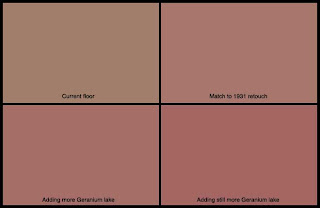

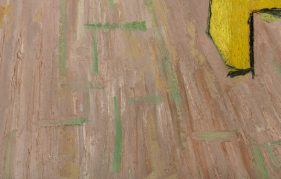



































































































































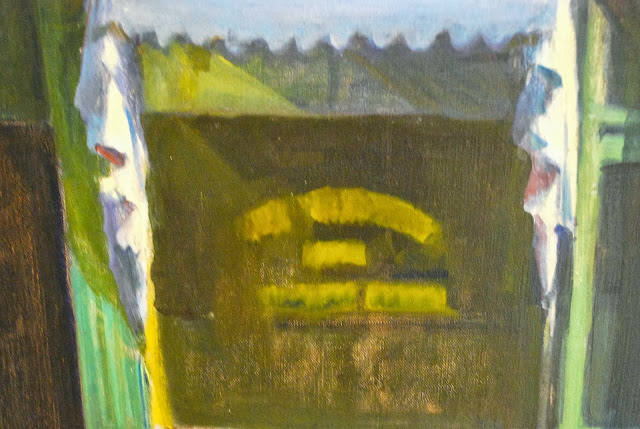




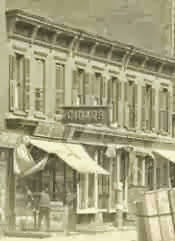





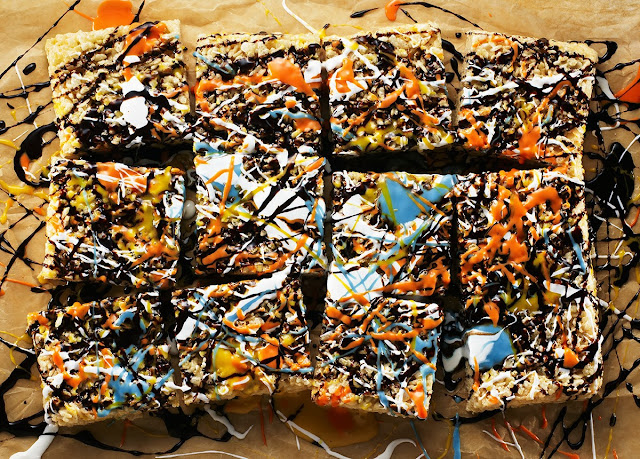


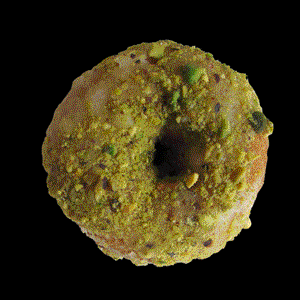
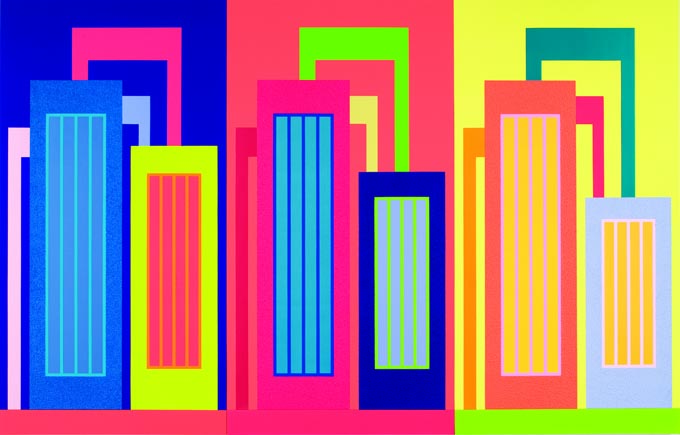







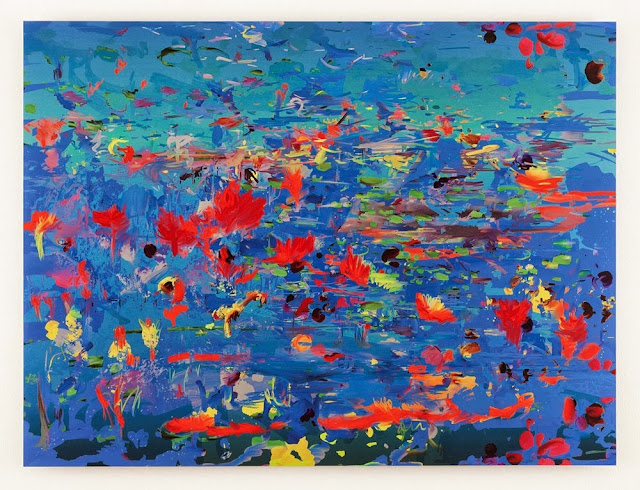














-large.jpg)

























